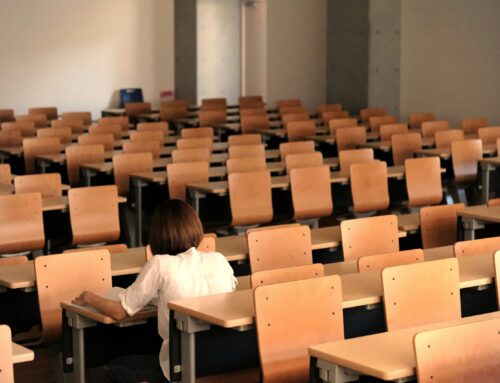 Why is the Crisis Happening?
Why is the Crisis Happening?
As evident through the extensive lack of teachers and/or people wanting to become educators, the teacher shortage of K-12 classrooms has been steadily rising. Schools, communities, and present teachers are attempting to create solutions to the various problems associated. But, why exactly is there a shortage, and what factors have been influencing this decline in recent years?
Experts within the field of education have been monitoring the issue, and they’ve observed the plummeting number of K-12 teachers and how specific aspects such as dire work conditions, low pay, and continuously increasing demands have played causational roles.[1] At large, educators have been under-compensated as a profession when compared with other occupations that contain similar education requirements, making the wages and benefits provided by jobs outside of teaching to be more desirable to individuals entering the job force.[2] These issues have caused the overall interest in teaching as a job to drastically decrease, exemplifying another factor of the teacher shortage. Data shows that in the year 2010, interest in K-12 teaching within high school students had fallen 40%, driving less and less students to even consider the occupation in future academic ventures.[1] Even parents are agreeing with their kids in the lack of this desire, where a 2018 poll conducted by Phi Delta Kappan (PDK) indicated that 54% of Americans “…did not want their children to become teachers.”[3] These aspects drive individuals towards other jobs, thus increasing the intensity of the teacher shortage.
Another recent aspect of the issue is the coronavirus pandemic, which worsened the already-existing teacher shortages. Within this time period, various aspects made teaching environments more hostile and stressful. For example, teachers had to fill many roles that they had not previously signed up for, school violence had skyrocketed, student absenteeism met record levels, etc.[1] Thus, in containing all above aspects, the teacher shortage occurred on account of many differing variables.
The Work Going into Solutions
In response to its presence, various methods to attack the issue have formed, allowing schools to then understand the factors that contribute to these solutions. With taking these items into account, researchers discovered that the solutions require nuance as the labor market is not stable, and is often localized by specific aspects such as “…geography, subject area, and grade level, among other factors.”[1] One example indicates how many states show an adequate amount of teachers for subjects such as social studies and elementary education, yet fail to meet the needs of teachers for math, foreign language, and special education subjects.[1] These specifics can even be dialed down to individual counties, showing just how varied the issue is. With this aspect in mind, researchers have taken action and focused on experimental approaches at local levels in order to maintain the diverse workforce needed for such nuanced circumstances.[1]
As previously mentioned, the teacher shortage indicates the overall decline in the desire to even pursue teaching, where many are identifying the inadequate pay and benefits as the main reason for opposing the profession.[3] To counter these aspects, along with other issues being faced as a result of the shortages, state and varying school districts are encouraging an array of solutions. Some of these solutions include increasing class sizes, emergency certification for teachers not having any existing experience, and long-term substitutes.[4] One specific example can be seen in Mesa, Arizona, where a team teaching model created allows a group of four teachers to work together in meeting the needs of 135 high schoolers within a single classroom.[4] Evidently, other issues would arise as a result of such a large classroom, where students may not feel as though they are getting an individualized education that meets their own specific needs. However, in times of unforeseen circumstances such as the coronavirus pandemic, temporary elements like this have helped to provide accessibility to education.
In these above approaches, the main items that were under consideration consisted of specific categories: “finances, school or district leadership, support for veteran and early-career teachers and school staff, mentorship of new teachers, and teacher recruitment.”[4] However, some educators are taking a more inspirational approach, hoping to engage with future educators and provide insight into their own experiences with students. In this approach, one teacher aimed to illustrate the relationships built with students and how this is a key element to “…casting the vision of a teaching future for students.”[5] In doing so, teachers also work on developing trust within the guardians of said students, thus indicating the level of impact educators have in positively influencing students and their families’ perspective towards teaching professions.[5] With this different approach, educators can not only work to create solutions for existing teacher shortages, but also ensure that the future does not contain the issue, as well.
In examining these aspects, the teacher shortage within K-12 classrooms is evident as schools faced numerous obstacles as a result. However, present solutions are helping to combat the problem and continuously work to improve the environments of existing teachers, providing the necessary benefits to make the career a feasible choice for many.
How Does PSG Fit In?
Here at Publishing Solutions Group, we proudly collaborate with educators in order to create polished and impactful materials that strive for the success of both students and teachers. In our work, we aim to not only provide quality content, but to also help simplify the teaching process through thoughtfully gathered and crafted resources. We work closely with clients to meet their needs and help them in their path towards educational success. Because of this, we recognize the importance of addressing current issues like the teacher shortage. In doing so, we can have an in-depth awareness of these topics and understand their effect on the world around us. We then can partake in meaningful conversations and respond effectively to changes.
[1] https://hub.jhu.edu/2024/03/27/solving-for-teacher-shortages/
[2] https://www.nea.org/student-success/recruit-and-retain-educators
[3] https://www.nea.org/advocating-for-change/new-from-nea/6-charts-explain-educator-shortage
[4] https://publication.dkg.org/Journal/90-3/index.html#p=8
[5] https://www.jstor.org/stable/27190631
Image free to use under the Unsplash license.




